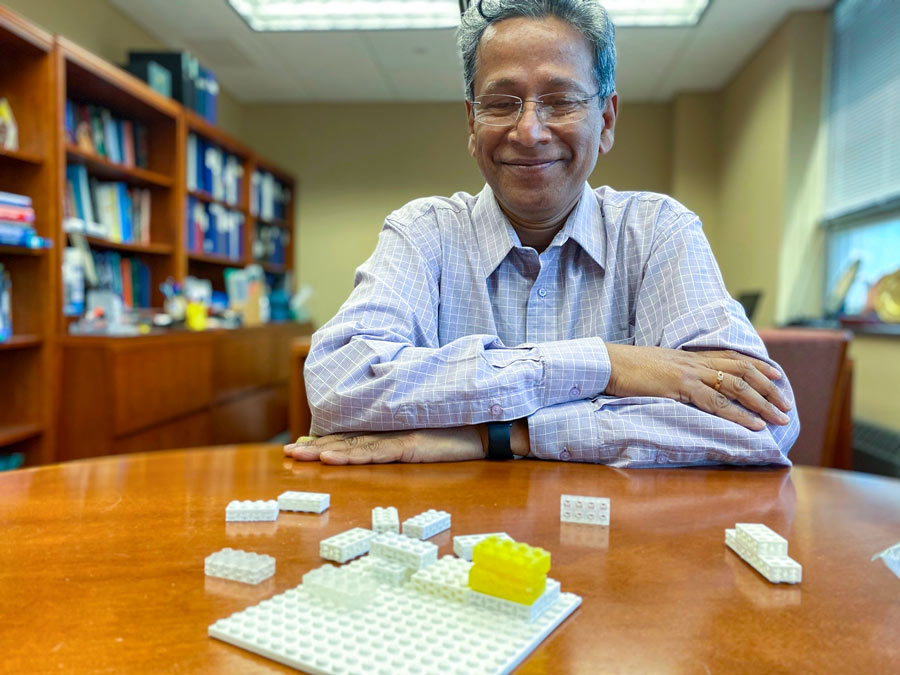The UA-led engineering research team of Piljae Joo, Yimin Yao, Nicholas Teo, and Sadhan C. Jana improved the strength and durability of a material used in common applications like thermal insulation in space shuttles and hospital filters.
These materials - called aerogels - are created by combining a polymer with a solvent to form a gel, and then removing the liquid from the gel and replacing it with air. This makes them porous, very low in density, but a major drawback is that they are unable to support large loads.
Think about a Styrofoam cup. It is a strong thermal insulator made from highly porous materials. When the temperature inside the cup gets too high, the materials the cup is made from loses shape and degrade. Their pores are too large to provide adequate insulation at high or low temperature. This is where aerogels become a better solution as these offer high thermal stability and very small pores to cut down on the transfer of heat.
The solution to making the aerogels stronger can be found in the most unlikely of places – the design of LEGOs.

Dr. Sadhan Jana in his office showing the prototype of his LEGO-inspired aerogel bricks.
“We were inspired by the simplicity of LEGOs and used them as templates to develop load bearing aerogel structures that are stronger and more durable,” says Dr. Sadhan C. Jana, Associate Dean of Research in the College of Engineering and Polymer Science.
The LEGO-like aerogel bricks are made from polymer struts with the interior space filled with aerogels. The aerogel inclusions provide desired thermal insulation, and the modular nature and strength are the main benefits of the bricks.
“If an 8,000-pound elephant was standing on a 12”x16”x16” aerogel brick structure, it would not break,” says Dr. Jana.

Piljae Joo, PhD student

Nicholas Teo, PhD student

Yimin Yao, MS student
Work is already in progress in Dr. Jana’s on-campus laboratory on an aerogel brick design that will be used in packing materials for cryogenic thermal insulation. Future applications could also include thermal insulation in ocean pipelines as well as hospital filters, where they will aid in removing nanoparticles and viruses from the air.
“Now we can use our imagination to scale up depending on how big the application is, just by putting the LEGO-bricks together.”
The research team’s work was published recently in Volume 46 of Additive Manufacturing (doi:10.1016/j.addma.2021.102059). Congrats to Dr. Jana and the team!
